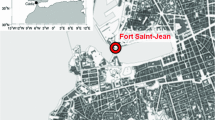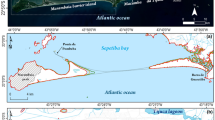Abstract
The paper describing sea level rise oscillations at Cape Hatteras, USA, by Parker (2012) has opened the discussion regarding if the velocity in a tide gauge record characterized by a quasi-60-year multi-decadal oscillation can be computed by linear fitting of 30 years of data in two ad hoc selected times and if acceleration can then be inferred by comparing these two values as proposed by Sallenger et al. (2012), or if this comparison is meaningless in that the 60-year time window is the minimum amount of time needed to evaluate the velocity in a record characterized by a quasi-60-year multi-decadal oscillation, and the acceleration has then to be computed as the time derivative of this velocity as suggested by Parker (2012a; b). For the specific case of The Battery, NY, it is shown here that the 60-year time window is the minimum time length needed to compute a velocity, and both the 60-year windows and the all data velocities are free of any acceleration at the present time. The 30-year time window velocity of 2009 is not representative of the present sea level rise, and the comparison of the 30-year time window velocity of 2009 and 1979 near a peak and a valley, respectively, of the 60-year multi-decadal oscillation to claim a present acceleration has no scientific background.


Similar content being viewed by others
References
AH Sallenger Jr, KS Doran & PA Howd (2012), Hotspot of accelerated sea-level rise on the Atlantic coast of North America, Nature climate change, dx.doi.org/10.1038/nclimate1597
Boretti A, Watson T (2012) The inconvenient truth: Ocean levels are not accelerating in Australia or over the world. Energy Environ 23(5):801–817
Chambers D, Merrifield M, Nerem R (2012) Is there a 60-year oscillation in global mean sea level? Geophys Res Lett 39:L18607 (6 pp)
Church JA, White NJ (2011) Sea-level rise from the late 19th to the early 21st Century. Surv Geophys. doi:10.1007/s10712-011-9119-1
CSIRO (2011), Reconstructed GMSL for 1880–2009. http://www.cmar.csiro.au/sealevel/GMSL_SG_2011.html
National Oceanic and Atmospheric Administration NOAA (2012), Teleconnections. http://www.ncdc.noaa.gov/teleconnections/
Parker A (2012), Oscillations of sea level rise along the Atlantic coast of North America north of Cape Hatteras, Natural Hazards, In Press, Accepted Manuscript, dx.doi.org/10.1007/s11069-012-0354-7
Parker A. (2012), Sea level trends at locations of the United States with more than 100 years of recording, Natural Hazards, In Press, Accepted Manuscript, dx.doi.org/10.1007/s11069-012-0400
Permanent Service for Mean Sea Level PSMSL (2012), Data and Station Information for NEW YORK (THE BATTERY). http://www.psmsl.org/data/obtaining/stations/12.php
Author information
Authors and Affiliations
Corresponding author
Rights and permissions
About this article
Cite this article
Watson, T., Boretti, A. On the different assessments of present velocity and acceleration in a tide gauge record characterized by a quasi-60-year periodic oscillation: comment to “Parker A., oscillations of sea level rise along the Atlantic coast of North America north of Cape Hatteras, natural hazards, in press, accepted manuscript”. Nat Hazards 119, 2321–2325 (2023). https://doi.org/10.1007/s11069-013-0580-7
Received:
Accepted:
Published:
Issue Date:
DOI: https://doi.org/10.1007/s11069-013-0580-7




